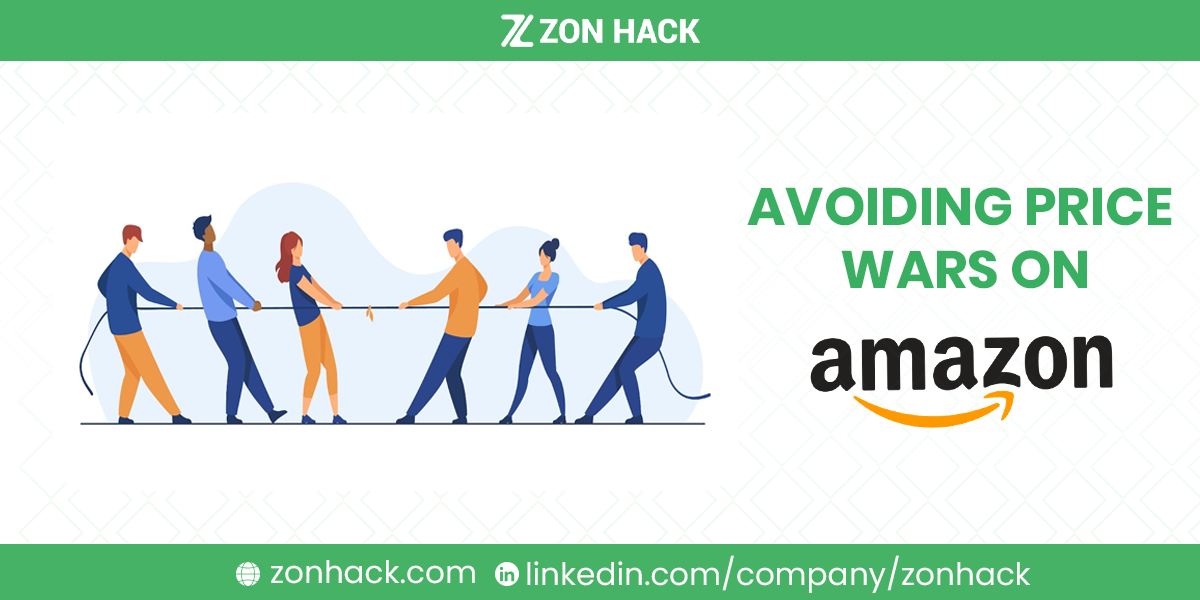Competing on Amazon often feels like a never-ending game of undercutting prices, a practice that leads many sellers into profit-eroding price wars. Did you know that nearly 40% of Amazon sellers struggle to stay profitable due to price competition? In a marketplace teeming with over 9.5 million sellers, it’s tempting to lower your prices just to win the Buy Box. But what if there were smarter, more sustainable ways to grow your business?
This article offers a comprehensive guide to avoiding price wars on Amazon. We’ll explore practical strategies that help you stay competitive while preserving your margins. From optimizing your brand positioning to leveraging advanced pricing tactics, these insights will ensure you navigate Amazon’s crowded landscape effectively—and profitably.
What Are Price Wars on Amazon?
Price wars occur when sellers on Amazon aggressively lower their prices to outbid competitors, often leading to a “race to the bottom.” The Amazon Buy Box algorithm heavily incentivizes the lowest price, fueling these battles. Sellers hoping to secure the coveted Buy Box often rely on automated repricing tools that, if poorly configured, perpetuate an endless cycle of price drops.
For example, let’s consider a hypothetical scenario: A new seller lists a popular Bluetooth speaker at $29.99, slightly undercutting the existing $31.99 price. In response, competitors reduce their prices to $29.49, triggering automated repricing tools to drive costs even lower. Within days, the speaker’s price plummets to $23.99, slashing profit margins for all sellers involved.
Causes of Price Wars on Amazon
- Competitor Undercutting: Many sellers believe the fastest way to win the Buy Box is by offering the lowest price. However, this short-term strategy often backfires by setting unsustainable pricing precedents.
- Overstocking: Excess inventory pressures sellers to offload products quickly, often through aggressive discounts, which contribute to price wars.
- New Sellers with No Reviews: Newcomers frequently enter the market with significantly lower prices to attract customers, disrupting established pricing dynamics.
- Unoptimized Repricing Tools: While repricing software can save time, poorly configured tools unintentionally lower prices without considering broader market trends.
- Customer Expectations: Consumers on Amazon have been conditioned to seek bargains. Sellers competing for price-sensitive buyers often find themselves stuck in a downward spiral.
The Hidden Dangers of Price Wars
Price wars might seem like an unavoidable aspect of selling on Amazon, but their consequences are far-reaching:
- Erosion of Profit Margins: A survey by Jungle Scout revealed that 54% of Amazon sellers operate with profit margins below 20%. Price wars further compress these already narrow margins, making profitability nearly impossible.
- Devaluation of Products: Repeated price reductions can harm your brand’s perception, especially if you’re selling premium products. Buyers may start associating your product with “bargain” quality, undermining its value.
- Customer Behavior Shifts: Price wars attract price-sensitive customers who are unlikely to become loyal, repeat buyers. These shoppers constantly seek the next cheapest option, reducing long-term customer retention.
- Resource Diversion: Instead of focusing on growth-oriented strategies like product innovation or marketing, sellers get stuck in reactive pricing battles, which drain time and energy.
Amazon’s hyper-competitive environment might make price wars seem inevitable, but as we’ll explore, adopting the right strategies can help you avoid this trap entirely.
Proven Strategies for Avoiding Price Wars
Build and Leverage a Strong Brand
One of the most effective ways to sidestep price wars is to establish a brand that customers trust and are willing to pay a premium for. When buyers associate your product with quality and reliability, they’re less likely to shop solely based on price.
Develop a Unique Value Proposition (UVP)
A strong UVP sets your product apart in a crowded marketplace. Consider brands like Hydro Flask, which charges a premium for water bottles by emphasizing durability, temperature retention, and eco-friendliness. Customers buy these bottles not because they’re the cheapest but because they offer unique features.
Focus on Brand Identity
Your branding should tell a compelling story that resonates with your target audience. Consistent messaging, professional product images, and engaging A+ Content on Amazon’s product pages can reinforce your value proposition. For example, showcasing the premium craftsmanship of your handmade leather wallets can justify a higher price point compared to mass-produced alternatives.
Optimize Product Listings
Optimizing your product listings isn’t just about adding keywords; it’s about creating an engaging shopping experience that highlights why your product is worth its price.
Visual Appeal Matters
High-quality images, including 360-degree views or lifestyle shots, help your product stand out. For instance, if you’re selling camping gear, a photo showing your tent in a stunning outdoor setting can evoke an emotional connection, convincing buyers of its value.
Persuasive Descriptions
A well-written product description goes beyond listing features. Instead, it emphasizes the benefits. For example, instead of stating, “Made from durable stainless steel,” write, “Crafted from high-grade stainless steel to ensure your cookware lasts for decades, even with daily use.”
Leverage Reviews and Social Proof
Positive reviews build trust, allowing you to maintain premium pricing. Encourage customers to leave reviews by providing exceptional customer service or offering follow-up emails with review requests.
Strategic Pricing Techniques
Adopting smart pricing strategies can prevent you from getting dragged into unnecessary price wars.
Dynamic Pricing
Dynamic pricing tools analyze market trends and competitor data to recommend optimal price points. For instance, tools like RepricerExpress allow you to set rules that adjust prices upward when competitors run out of stock, ensuring you maximize profit without constant manual intervention.
Understand Costs and Margins
Before setting prices, calculate all associated costs, including Amazon FBA fees, advertising expenses, and shipping. Using tools like Helium 10’s profitability calculator ensures you’re not unintentionally selling at a loss.
Value-Based Pricing
Instead of competing on cost alone, align your prices with the perceived value of your product. If your product offers superior durability or exclusive features, emphasize these aspects in your marketing to justify the higher price.
Customer-Centric Strategies to Avoid Price Wars
Beyond pricing and branding, focusing on the customer experience can keep you competitive without cutting prices.
Deliver Excellent Customer Service
Amazon buyers appreciate prompt responses and proactive problem resolution. Sellers who excel in customer service not only earn better reviews but also foster loyalty, allowing them to maintain higher prices. For example, offering a no-questions-asked return policy signals confidence in your product’s quality.
Upselling and Cross-Selling
Increase your average order value by recommending complementary products. If you’re selling fitness trackers, suggest related items like replacement bands or charging docks. This approach helps you earn more per customer without lowering prices.
How to Set Optimal Prices Without Triggering a Price War
Setting optimal prices requires balancing competitiveness with profitability. Begin with a thorough cost analysis to identify your break-even point and profit goals. Tools like Jungle Scout and Keepa are invaluable for conducting market research, allowing you to gauge competitor pricing and demand trends. By understanding the value your product provides, you can implement value-based pricing, which focuses on customer perception rather than cost alone.
Price testing is another critical component. Experimenting with different price points helps identify the sweet spot where you maximize profits without triggering price wars. For example, you might test $29.99 versus $32.99 for a product and analyze sales performance to determine which price yields better results.
How ZonHack Can Help You Avoid Price Wars on Amazon
At ZonHack, we specialize in guiding Amazon sellers to sustainable profitability by employing proven strategies to avoid price wars. Our expert team leverages advanced tools to monitor competitor pricing, conduct in-depth market analysis, and implement dynamic pricing tailored to your goals.
We optimize product listings with high-converting visuals and persuasive content, highlighting your unique value propositions to justify premium pricing. ZonHack also helps you understand your cost structures, ensuring pricing strategies that maximize profit margins.
From crafting brand identity to using Amazon’s A+ Content effectively, ZonHack equips you with the expertise to dominate the market without competing on price.




